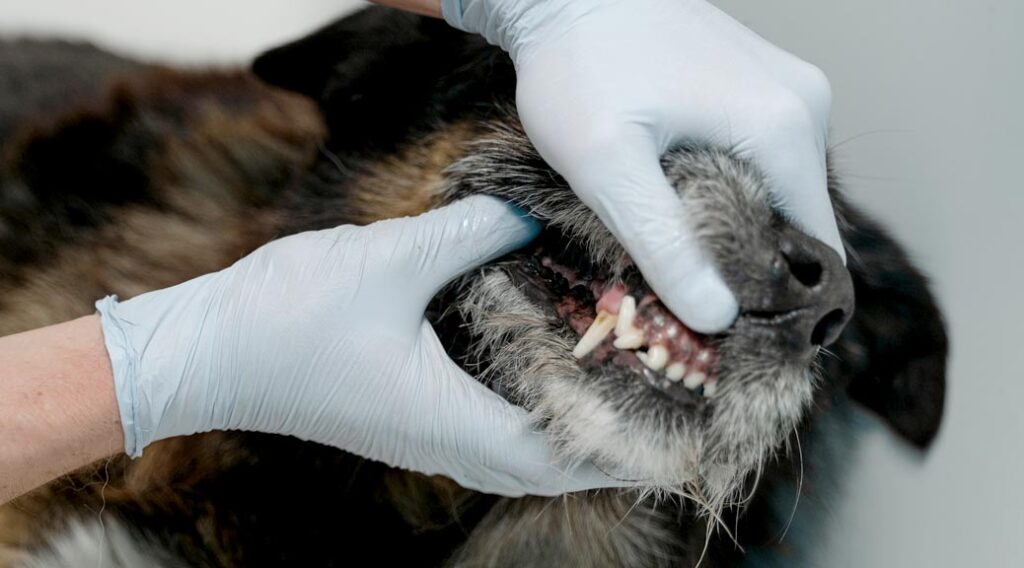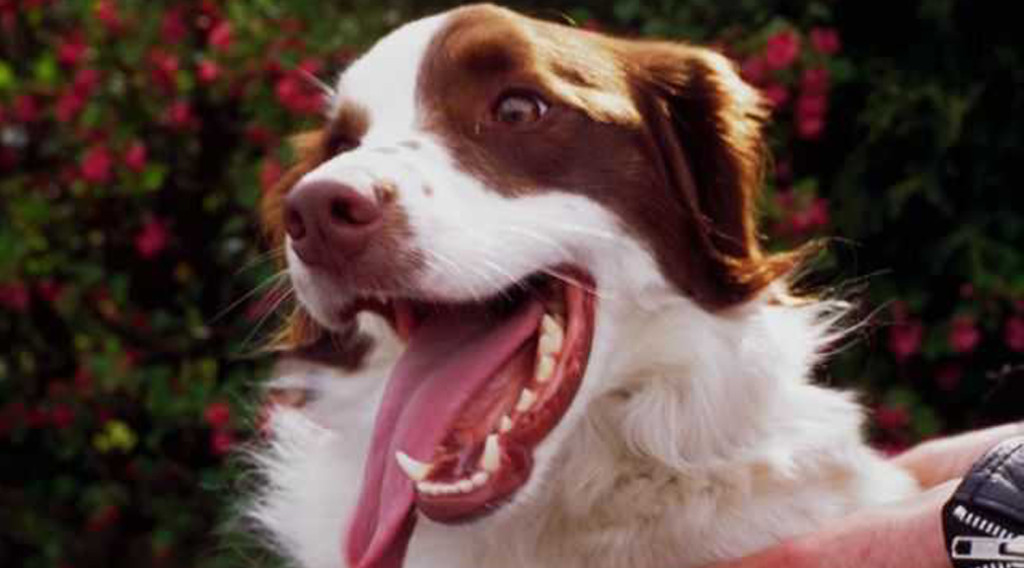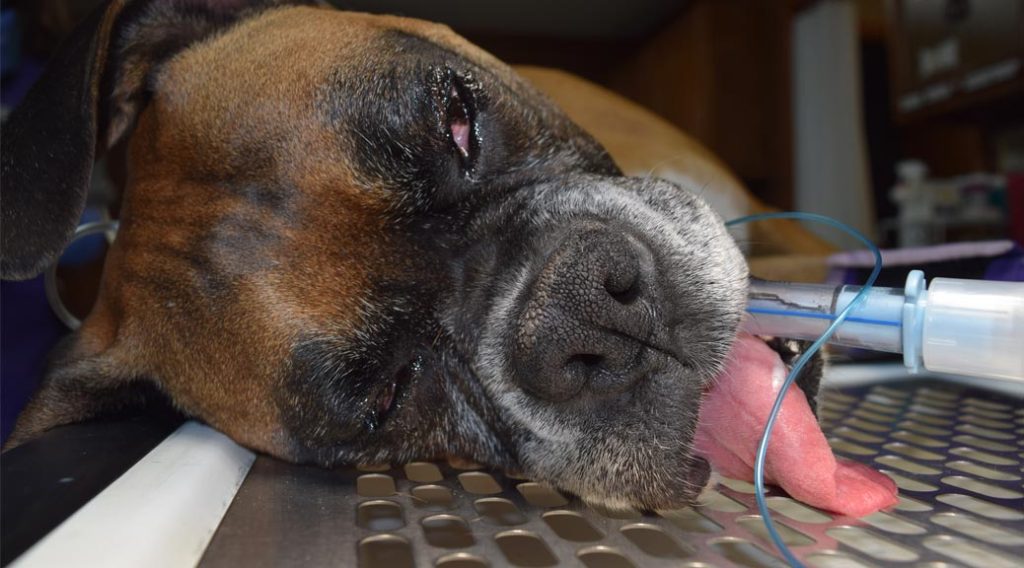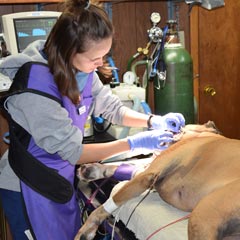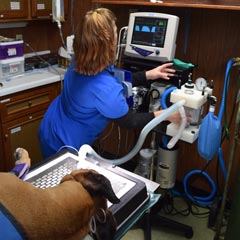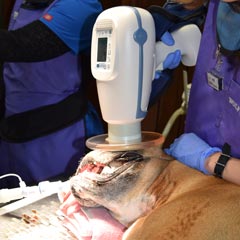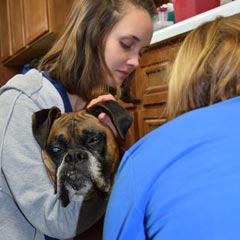Time to Focus on Your Pet’s Dental Health
By their third birthday, 80% of dogs and 70% of cats have some form of periodontal disease, leading to progressively worsening infections and inflammation of the gums and bone that surround and support the teeth. Most of this dental disease happens below the gum line, where you can’t see it.
As the disease progresses to more advanced stages, you may observe these signs:
- Bad breath
- Broken or loose teeth
- Discolored or tartar-covered teeth
- Abnormal chewing, drooling or dropping food
- Reduced appetite or refusal to eat
- Pain in or around the mouth
- Bleeding from the mouth
- Swelling in areas around the mouth
If left untreated, dental disease can cause your pet to lose teeth and, if infection spreads into the bloodstream, can damage your pet’s heart, liver and kidneys with potentially deadly consequences.
Treating and even preventing periodontal disease is a joint effort between your veterinary team and you. Here’s what we can do.
How Your Veterinary Team Can Help
Our veterinarians routinely make a dental health evaluation and counseling part of your pet’s regular yearly (or twice-yearly for older pets) preventive exam.
If, during our visual inspection of your pet’s teeth and gums, we detect signs of periodontal disease, we will most likely recommend a complete dental examination and cleaning, provided our initial physical examination and blood work confirm your pet is healthy enough to undergo the anesthesia necessary to do the exam and cleaning thoroughly and safely.
Before we begin, we will let you know the estimated cost of the procedure and any possible additional services we may find we need to provide, such as extracting teeth, once we begin the exam.
We understand you may be concerned about anesthetizing your pet for the dental procedure. Although there are always risks associated with anesthesia, the process is generally safe and we take every precaution to assure the procedure goes smoothly.
If you have questions about our anesthesia protocols, please ask them!
Once your pet is under anesthesia, we proceed with a complete, stress-free, pain-free oral exam with x-rays to show us any problems beneath the gum line such as broken teeth and damaged roots, bone deterioration, abscesses or infections.
Next, we clean your pet’s teeth thoroughly, including under the gum line, followed by scaling and polishing.
After the procedure, your veterinarian will give you a full report on the state of your pet’s dental health and advise on any aftercare needed when you come to pick him or her up.
How You Can Help
Brushing your pet’s teeth regularly—ideally, daily—is the most effective thing you can do to maintain your pet’s dental health between cleanings and slow the progression of any developing periodontal disease.
Daily brushing at home can reduce the frequency or even eliminate the need for professional cleanings, so it is well worth the effort.
Unfortunately, only a small percentage of dog and cat owners brush their pets’ teeth. A 2016 marketing survey conducted in Canada reported only 7% of dog owners said they brush their dogs’ teeth daily. In Sweden, only 4% of dog owners reported daily brushing.
According to the AVMA, “Although daily tooth brushing is advised for dogs and cats, a study published in the Journal of Veterinary Dentistry showed that only 2% of dog owners follow through with this practice.”
We haven’t come across reliable research data on tooth brushing by cat owners, but we’d estimate very few of our cat-owning clients brush their cats’ teeth.
Despite the discouraging statistics, we hope you will be willing to give tooth-brushing a try.
For more information from the AVMA, including videos on home dental care and what to expect from a professional cleaning, visit the “Pet Dental Care” page on the AVMA’s website.
While brushing your pet’s teeth is the most effective home dental health care, your veterinarian may also suggest alternatives such as dental treats, chews, diets and water additives.
The Veterinary Oral Health Council, which has been awarding its VOHC Seal of Acceptance to dental health products for pets since 1998, lists accepted products for dogs and cats on its website.
You’ll find many of these products and more available in our online store. Just search for “dental” to see our full line of dental health care products.
Your veterinarian will be happy to recommend the best products for your pet.
A Common, Preventable Disease
Periodontal disease is the most common clinical condition we diagnose in our adult patients, but as the statistics show, we have plenty of opportunity for improvement!
Besides the low rate of regular tooth-brushing by pet owners, the AVMA reports a survey of pet owners showed that only 14% of dogs and 9% of cats receive dental care at the veterinarian’s office.
We can do better!
By working together to provide regular professional and home care, we can detect periodontal disease early and perhaps even prevent it entirely. Your pet will be healthier and more comfortable, and you will avoid the stress and expense of dealing with advanced periodontal disease. So let’s collaborate now to improve and maintain your pet’s dental health.
Time to Focus on Your Pet’s Dental Health Read More »

